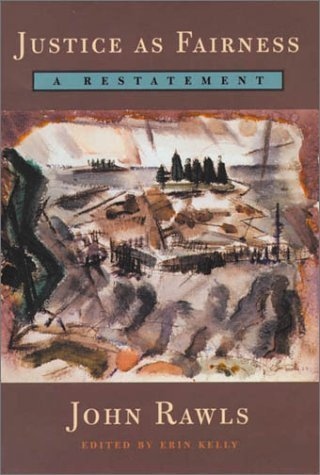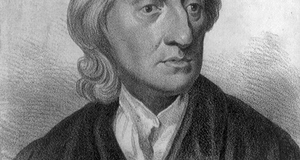Theories of Multicultural Toleration: An Examination of Justice as Fairness and Political Theology
By
2014, Vol. 6 No. 03 | pg. 1/4 | »
IN THIS ARTICLE
KEYWORDS
The place of multiculturalism in a liberal democracy continues to be a contentious question and one with which the liberal democratic state must constantly grapple. Two differing conceptions of the way the state should conceive of multicultural toleration can be seen in Justice as Fairness by John Rawls and Political Theology by Carl Schmitt. In Justice as Fairness, Rawls details his theory of justice as fairness, a model for a “well-ordered society” and conceives of reasonable pluralism as being a permanent condition of democratic society. Rawls deals with the issue of multicultural toleration in the democratic state by claiming that it is not only ideal, but also possible when linked to his concept of the overlapping consensus. In Political Theology, Schmitt conceives of the political “decision” as being the key feature of sovereignty. Using a model of decisionism, Schmitt determines that multicultural toleration in the democratic state is facetious at best and that it is not possible for a liberal democratic state to practice true toleration. It was Schmitt’s belief that his decisionist conception of the sovereign applied to the citizens and that no person could claim to be truly unbiased or tolerant. This examination elaborates on Rawls and Schmitt’s conceptions of multicultural toleration, examining the place of these conceptions within Justice as Fairness and Political Theology before contrasting their viewpoints. What Is Multicultural Toleration?In order to examine how the issue of multicultural toleration is dealt with by Rawls and Schmitt, it is necessary to present a general definition of this concept. Multiculturalism is defined as “the presence and persistence of diverse racial and ethnic minorities who define themselves as different and who wish to remain so” (Dewing, 2009: 1) Multiculturalism can be conceptualized as a mosaic, in which different cultures and ideologies are allowed to maintain their distinct identities with the sum of this being the state. Tolerance is conceptualized as “sympathy or indulgence for beliefs or practices differing from or conflicting with one's own” (Merriam-Webster, 2013) on both the part of the citizens and the state regardless of whether the object of toleration is approved or not. The idea of the neutral state is seen as key to multiculturalism, meaning that the state is not to be seen as biased towards any particular culture or ideology aside from the basic liberal and human rights espoused by constitutional law. Multicultural toleration can then be defined as the coexistence of cultures and ideological groups who recognize, receive, and reciprocate the freedom of groups to live their lives within constitutional limits according to their beliefs, without bias from the state or interference at the hands of other comparable group. My aim is to reveal how ideas within Justice as Fairness and Political Theology illuminate this definition, and to address the question of whether multicultural toleration can truly exist within the liberal democratic state. An Overview of Justice as Fairness by John RawlsJohn Rawls’ goal in Justice as Fairness was to lay out a conception of political justice and an ideal model of the state that would be acceptable under the conditions of reasonable pluralism. Rawls begins with a discussion on the roles of political philosophy, stating that political philosophy is meant to examine questions and conflicting issues in society. The aim of this is to see common ground can be reached that would lead to a political agreement. (Rawls, 2001: 2) Rawls claims that conflict between conceptions of liberty and equality are a fundamental part of the democratic tradition, and he finds that the root of this conflict is in how different philosophical and moral doctrines deal with competing claims of liberty and equality are understood. (Rawls, 2001: 2) To solve this problem, Rawls aims to formulate principles of political justice so that they will fit together into one scheme, making it possible to say that everyone is free and equal. (Rawls, 2001: 4) Rawls uses “justice as fairness” to describe the scheme of political justice he creates. Rawls believes that political power is only legitimate when a constitution is affirmed by reasonable and rational people, and justice as fairness is meant to warrant this endorsement. (Rawls, 2001: 41) The purpose of creating these principles would be to establish a “well-ordered society,” the result of applying the principles of justice to a fair system of social cooperation. Rawls’ conception of a well-ordered society is based upon three principles. The first principle is everyone knowing, accepting and knowing everyone accepts the same conception of justice. (Rawls, 2001: 8)The second principle is that society’s “basic structure” is known and understood publicly and the third principle requires that is citizens know enough about the conception of political justice to apply it in everyday life. (Rawls, 2001: 8) Rawls uses the term “basic structure” to denote “the way in which the main political and social institutions of a society fit together into one system of social cooperation.” (Rawls, 2001: 10) The basic structure is also used to describe how basic rights and duties are allocated in a society, as well as regulating the division of advantages coming from social cooperation. (Rawls, 2001: 10) Rawls argues that justice primarily concerns the basic structure, and that a just basic structure is needed to defend a conception of political justice. (Rawls, 2001: 10) Rawls finds it to be crucial that citizens be free and equal, and must understand that they are this way. (Rawls, 2001: 21) In addition, a well ordered society must have a political conception of justice that is publicly justified, meaning that there is “a shared basis for citizens to justify to one another their political judgments” (Rawls, 2001: 27). The public conception of justice when used to regulate society transforms it into a well-ordered society. (Rawls, 2001: 27) It is Rawls’ goal in Justice as Fairness to find a public conception of justice that will be feasible given the reality of pluralism. According to Rawls, the problem of reasonable pluralism is one that the liberal democratic state must address in order to become a well-ordered society. (Rawls, 2001: 32) An important distinction is drawn between the reasonable and the rational; the reasonable has a type of moral backing while the rational is simply what makes the most sense absent of any moral thought. (Rawls, 2001: 7) This idea is important because explains how a moral backing legitimates various societal constructs and circumstances such as pluralism rather than being created for strictly pragmatic reasons. Reasonable pluralism as Rawls describes it is a feature of the modern democratic state. Reasonable pluralism occurs when citizens “affirm deferent… incommensurable and irreconcilable but reasonable in light of their comprehensive doctrines of the good” (Rawls, 2001: 84). Reasonable pluralism is viewed by Rawls as a permanent part of democratic culture, meaning:
Rawls’ model of justice as fairness attempts to find a conception of political justice that will fit with the problem of reasonable pluralism, and he develops his two principles of justice to answer this question. The focus of the principles of justice as fairness is to create fair terms of social cooperation and to regulate the structure of society. (Rawls, 2001: 7)They are the key to the model of justice as fairness, and everything that the model entails must be compatible them. (Rawls, 2001: 80) The two principles are: a. Each person has the same indefeasible claim to a fully adequate scheme of equal basic liberties, which scheme is compatible with the same scheme of liberties for all.” b. Social and economic inequalities are to satisfy two conditions: first, they are to be attached to offices and positions open to all under conditions of fair equality of opportunity and second, they are to be to the greatest benefit of the least-advantaged members of society (the difference principle) (Rawls, 2001: 42). The principles of justice must always be applied lexically, as basic liberties are a constitutional essential in justice as fairness. (Rawls, 2001: 47) Furthermore, the basic liberties that the first principle describes cannot be traded off to promote fair equality of opportunity as entailed by the second principle. (Rawls, 2001: 43) Fair equality of opportunity according to Rawls means that public offices and social positions need not only to be open in a formal sense but also in a substantive sense. (Rawls, 2001: 43) Rawls goes into great detail describing how the basic structure of society can ensure the first principle is followed, believing that the basic liberties need to be negotiated by groups under the “veil ignorance,” shaping the basic structure so that these rights are protected for all. (Rawls, 2001: 85) A long examination of the second principle of justice is undertaken, as Rawls explains how fair equality of opportunity can be implemented in the basic structure of society. Rawls describes that any existing inequality must benefit the least advantaged in society, calling this “the difference principle” (Rawls, 2001: 64). Rawls identifies the main problem resulting from reasonable pluralism is getting diverse groups to agree to a similar conception of justice while ensuring that both the first and second principles of justice can be implemented in society.Continued on Next Page » Suggested Reading from Inquiries Journal
Inquiries Journal provides undergraduate and graduate students around the world a platform for the wide dissemination of academic work over a range of core disciplines. Representing the work of students from hundreds of institutions around the globe, Inquiries Journal's large database of academic articles is completely free. Learn more | Blog | Submit Latest in Philosophy |
















